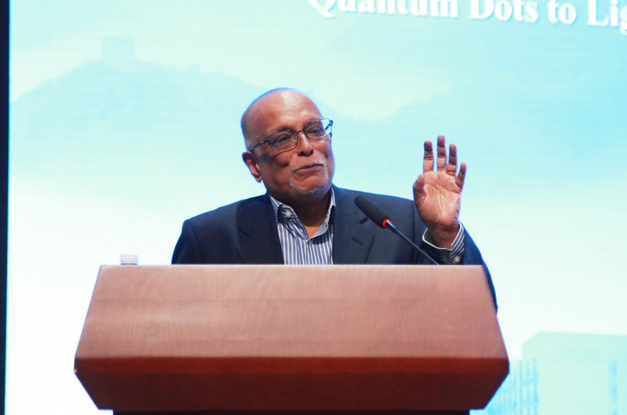报告人: Gehan A. J. Amaratunga (FREng) 剑桥大学
报告时间:2023年12月11日10:30
报告地点:科研楼一楼报告厅
联系人: 魏迪 研究员


About the speaker
Gehan A. J. Amaratunga held the 1966 Chair and Professorship in Engineering at the University of Cambridge from 1998 to 2023. He is currently Professor at the Zhejiang University – University of Illinois Urbana Champagne Institute (ZJUI) in Haining, China. He is also Honorary Professor at Yunnan University and Peking University Graduate School, Shenzhen in China and been the Tan Chin Tuan Visiting Professor at Nanyang Technological University, Singapore. He was the Chief of Research and Innovation at the Sri Lanka Institute of Nanotechnology (SLINTEC) 2011-19; and held past faculty and research positions at Liverpool, Southampton and Stanford Universities. He is a Fellow of the Royal Academy of Engineering UK, National Academy of Sciences of Sri Lanka, Royal Society of Arts UK and the Institution of Engineering and Technology. He has published over 800 academic papers and is an inventor on 56 granted patents. His research is in the broad area of materials, devices and technologies for electrical energy and power. He is also a founder of six start-up companies, one which, Zinergy, has developed flexible batteries for IoT applications. He was awarded the Silver Medal of the Royal Academy of Engineering in 2007 in recognition of his success in translating his research to societal benefit.
Abstract
The presentation gives an introduction to quantum dots (QD) synthesis and design for light emitting diodes (LEDs) and full colour displays. An intriguing ability which QDs enable is the realization of a full colour palette based on many primaries rather than the Red, Green, Blue emitters to which most displays are limited at present. An advantage of using more than 3 primaries is the opportunity it gives to optimise power consumption in generating a colour range. A significant outcome is the realization that a rich white light spectrum can be generated from a single QD-LED smart light by varying the drive voltage, for example. There is a growing body of evidence which shows that the spectrum of day light which is seen has a direct bearing on human health. QD-LED based smart lighting is a route to realize customisable lighting environments which can enhance human wellbeing. The major limitations in the development of QD based optoelectronic devices including efficient electron and hole transport in the active QD layer is also discussed.

